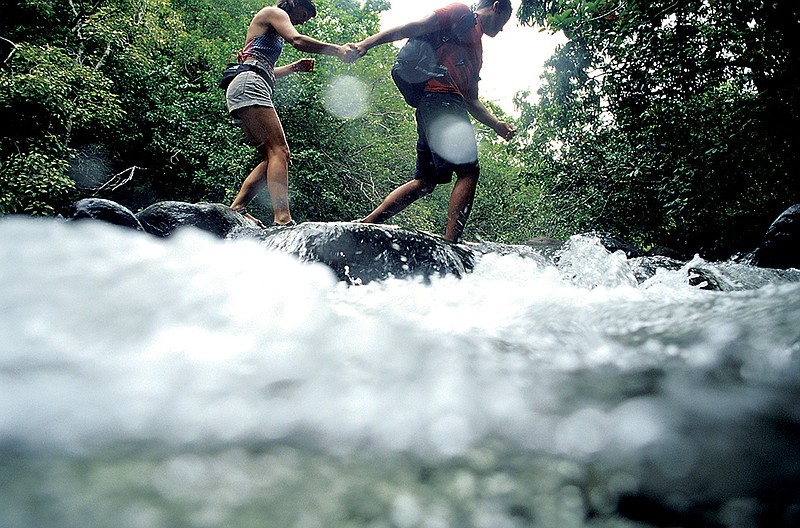Even though years have passed, Damon Graham can still remember the day a woman and her daughter were snatched away by a strong current at Rock Island State Park.
Though shaken and scared, the two walked away with only minor injuries. But not everyone is so lucky.
As park manager of the 883-acre natural area near Sparta, Tennessee, Graham has seen many fatalities involving hikers attempting to cross swollen rivers or creeks during his 10 years there - and he says the nearby Tennessee Valley Authority dam that releases every day or two isn't always to blame. Instead, he's found that most incidents occur when hikers overestimate their ability to cross a body of water or underestimate the conditions of the water.
"Water can be really deceiving," Graham says. "As park rangers, we look at it and say, 'Obviously nobody could cross that without being swept downstream.' But the general public just doesn't really understand how strong water is."
Avoid making the same mistake by following Graham's tips for safely crossing a river or creek.
SCOUTING:
- Know your surroundings. Before stepping foot on the trail, find out if there are any hazards that could make the water rise suddenly, like nearby dams. Trail maps often display information about water conditions - like seasonal fluctuations or areas impassable after heavy rain - and you can learn more by talking to hikers familiar with the area. Be sure to check the weather for coming rainfall or previous showers that could have affected water levels.
- Check the water level. Rushing water above ankle level can knock you off your feet, and it's even harder to maintain balance when water is above the knees. You may be able to gauge depth if the water is clear, but if not, you'll need to use a staff or stick to probe the area ahead of you as you go. If the water reaches your thighs, consider finding another crossing point.
- Test the strength of the current. Throw a stick in the stream to see how quickly the water carries it away. If the stick moves faster than you can walk alongside it, then the current is too strong. Do not attempt to cross.
- Look downstream. Identify obstacles that could be hazardous if you get swept off your feet, such as rock ledges, dead branches and other debris. The safest locations to cross will be free of such hazards.
CROSSING:
- Use a hiking staff. If you don't have one, find a sturdy stick. This will allow you to always have three secure points of contact, which is especially important when crossing areas with slick rock.
- » Face upstream. Lean slightly into the current and take shuffle steps to the side. The angle will give you an idea of how the water is moving so you can brace yourself against the flow.
- Buddy up. If you're in a group, lock arms with two or three people and side-shuffle in a slightly diagonal line. Place the strongest person on the upstream end of the line so he or she can break the current for the rest of the group. Move one at a time, allowing each person to steady him or herself before the next follows. This maneuver ensures that if one person slips, the others can hold him or her up.
- Beware what you wear. Baggy pants will catch more current and should always be avoided. Shorts are recommended. Don't go barefoot to keep your shoes dry, as the rock is often slippery. Pliable boots with a good grip are your best bet for making it across safely. Boots with a stiff sole may be good for long-distance hiking, but can be dangerous on slick rock.
IF WASHED AWAY:
- Don't fight the current. You'll only waste energy.
- Don't try to stand. Especially if the water is deep. Your foot or clothes could get caught in underwater obstacles, which could prevent you from swimming free, or hold you underwater.
- Float on your back. Keep your toes, nose and elbows up - or, "toes, nose and bows," as Graham likes to say to help people remember. Try to remain as close to the surface of the water as you can. Then use your hands to guide yourself to the nearest shoreline.
